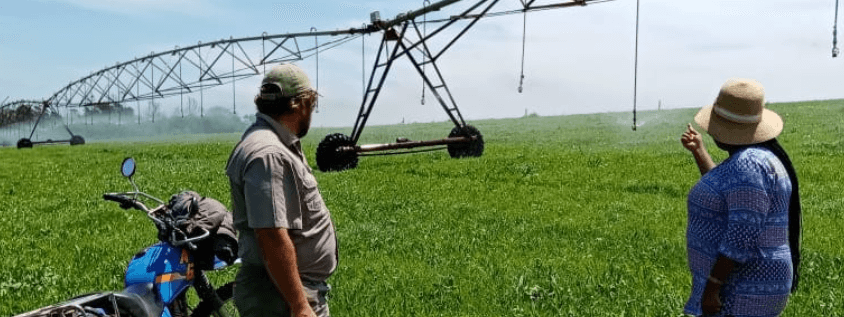Global warming has had a drastic impact on nature and one of its biggest hits has been on water availability. Of all the water on earth, 2.5% is fresh water and only 1% is available for use. The remaining fresh water is locked up in ice or is too deep underground. Agriculture uses over 70% of our global, available, fresh water. From this we can see that we are facing a water-stressed future. The big question is: what are we doing about it?
Often when I discuss water use with farmers, their first comment is that they do not have enough water for irrigation. I wonder how true this is, though? How efficiently is water really being used in agriculture? If agriculture uses such a large proportion of the available fresh water, and farmers still say they do not have enough, then we are facing a bigger problem than we thought.
It is obvious that we must start managing the fresh water we have available better, so I would like to challenge farmers to think about their water management. The first principle is that it is quite impossible to manage what you do not measure, so we need to start by measuring how much we use and how efficiently we are using it.
What is water use efficiency?
Water use efficiency (WUE) is a measurement of how efficiently water is used to produce a product. For example, how many litres of water you use to produce a ton of maize or a litre of milk. Such a measure can be helpful to benchmark against other farmers and identify opportunities for improvement. In assessing water use efficiencies on farms, it is evident that the primary source of water use is through irrigation. Therefore, in the rest of this article I will be exploring some of the ways that WUE can be improved through better irrigation practices.
Irrigation modernisation and automation.
All equipment and machinery are subject to wear and tear and it ends up not working as effectively as it originally used to. These systems therefore require regular calibration, maintenance, and change where necessary. Irrigation modernisation can be implemented by replacing old irrigation infrastructure with new and upgraded systems. The benefit of modernising includes improved water delivery and uniformity across the field. Worn out irrigation systems that have leaks and sprinkler heads that are clogged, affect the accuracy with which water is applied to the ground. New systems such as low-pressure systems that irrigate bigger drops on pasture fields and systems that can do precision irrigation, come as a cost-effective solution.
Now that the system is upgraded, you need to measure how much water gets to irrigators. Water meters are efficient and convenient tracking devices. Especially when they have telemetry systems attached to them, so that you are able to retrieve data easily on your computer or even your phone. You can even receive alerts of water leaks. This is all the convenience that comes with modernisation. You can also get upgraded systems that automatically stop irrigating once the pressure is off. It forces you to address the problem and thus reducing all the time that efficiency will be compromised.
Irrigation scheduling
Proper irrigation scheduling makes a huge contribution to how efficiently water is used on a farm. It is not enough for a farmer to determine irrigation based on their instinct or “rule of thumb”, you need to monitor certain aspects and properties on a farm to help you know when to irrigate and how much to irrigate. Otherwise, you might end up using more or less than what is needed at a certain time. For a farmer to implement proper irrigation scheduling these important factors need to be measured and monitored:
- Soil health – this will tell you how much carbon you have built in your soil that will help improve structure and thus water holding capacity.
- Soil moisture – soil moisture is important because it tells you how much water is still available in the soil.
- Weather pattern – installing a weather station on your farm will tell you if it is the right time to irrigate and will give you more information as to calculate how much water is being lost or used by your plants daily and how much they need in replacement.
- Plant water use – you need to know how much water your crops or pastures lose and how much they need. There are new technologies used in estimating crop water status for irrigation scheduling purposes such as lysimeters that measure evapotranspiration from crops.
Conclusion
The above points that are defined are all equally important and when you apply them together you will immensely improve the farm’s WUE. We know that water is scarce, but we need to start paying attention to the available water that we have and improve the way that we use it so that it will still be available for future use.
Further reading
http://traceandsave.com/make-every-drop-count/
http://traceandsave.com/our-precious-resource-is-becoming-even-scarcer/
http://traceandsave.com/finding-the-water-sweet-spot/
Sources
Koech, R and Langat, P. 2018. Improving Irrigation Water Use Efficiency: A Review of Advances, Challenges and Opportunities in the Australian Context. Water. 10:1771.
- Measuring for irrigation efficiency - 2022-09-22
- Why does feed nutrition for dairy cows matter? - 2021-09-20
- Facing a drier future - 2021-05-12

